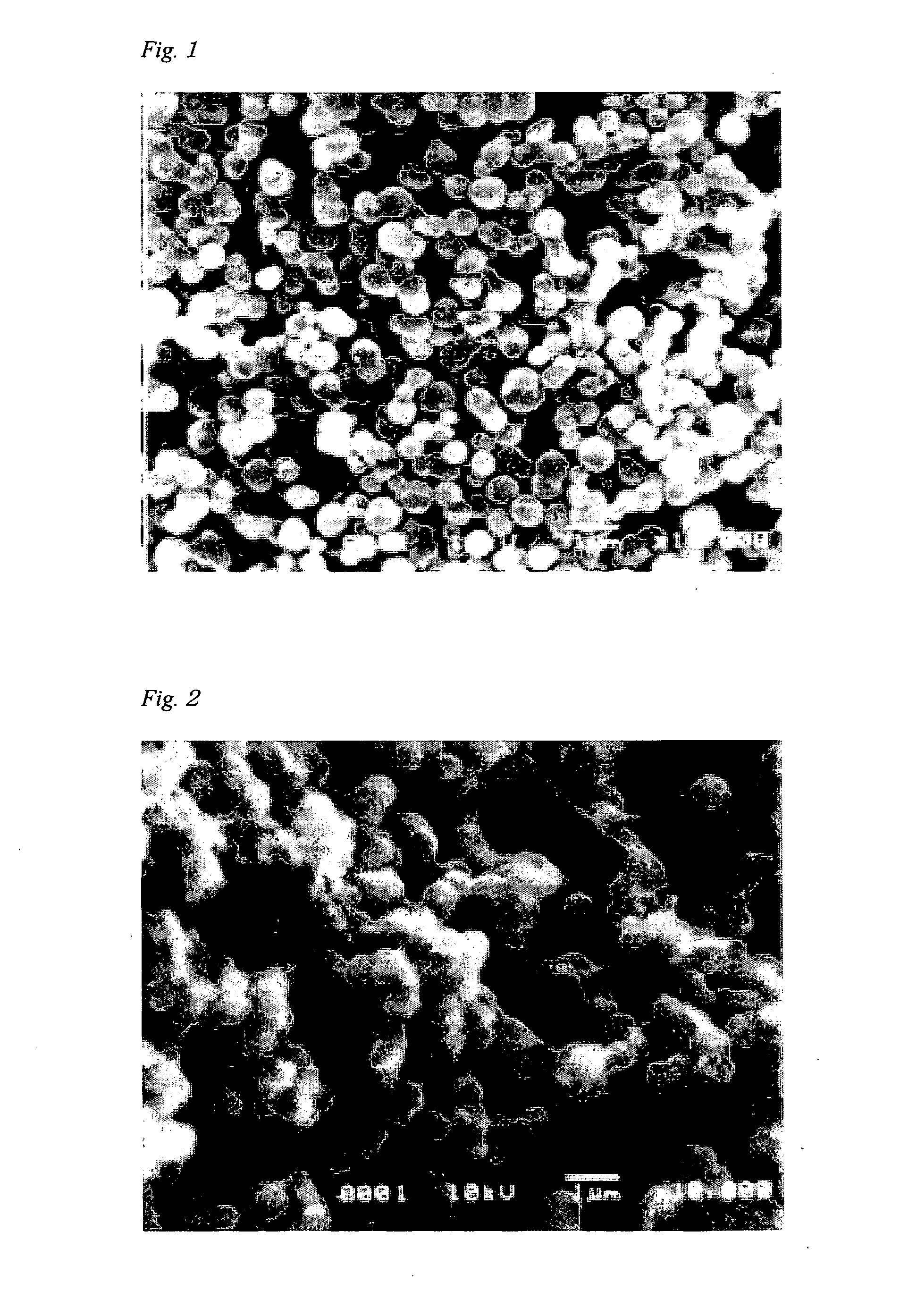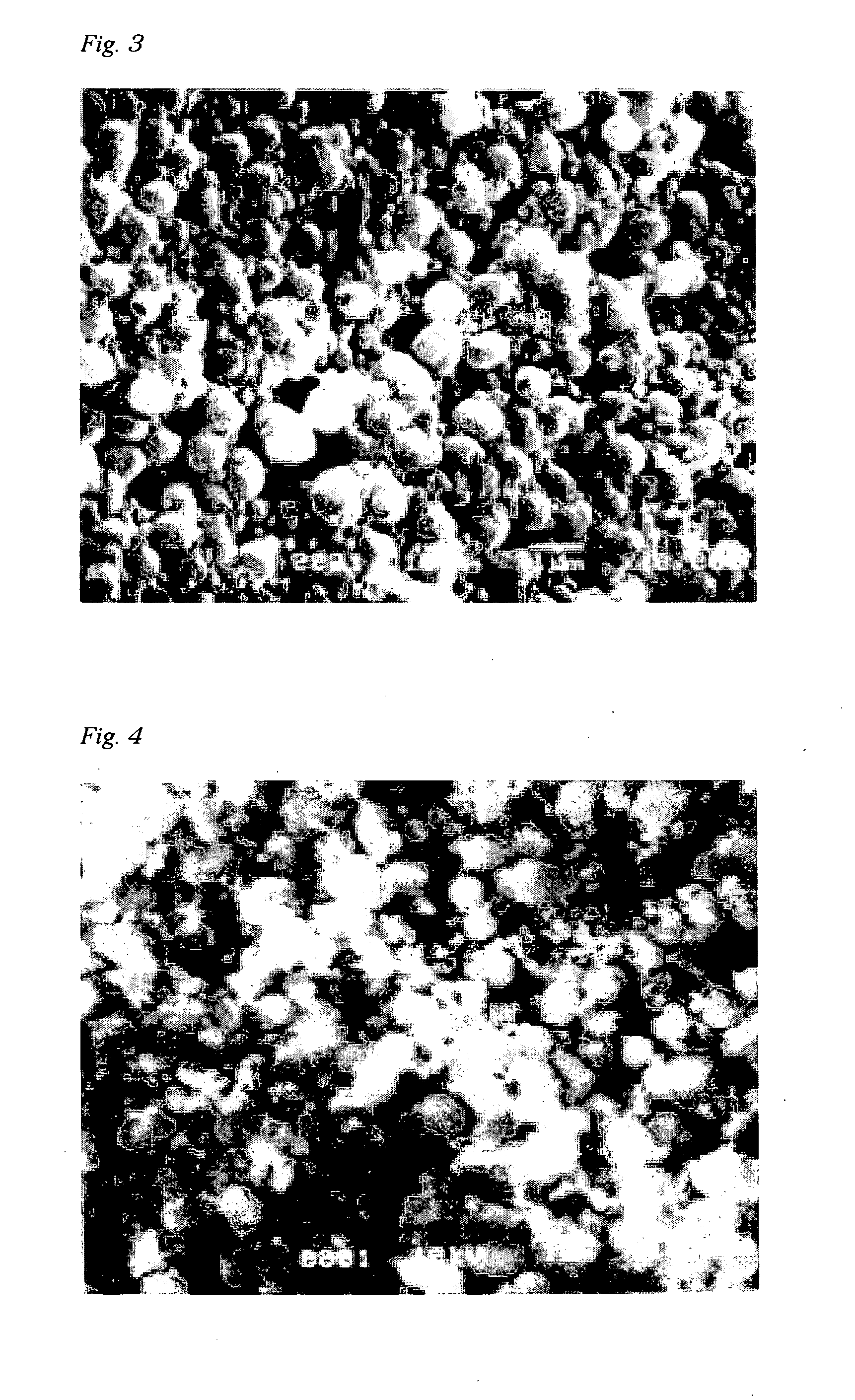Silicon-Containing Particles, Method For Manufacturing Thereof, Oil Composition, Ceramic Material, And Method For Manufacturing Thereof
a technology of silicon-containing particles and oil compositions, which is applied in the directions of transportation and packaging, natural mineral layered products, and plastic layered products. it can solve the problems of increasing the difficulty of controlling the diameter of the particle, reducing the efficiency of the process, and reducing the cost of the process. , to achieve the effect of high ceramification, simple process and controlled diameter
- Summary
- Abstract
- Description
- Claims
- Application Information
AI Technical Summary
Benefits of technology
Problems solved by technology
Method used
Image
Examples
example 1
Practical Example 1
[0128]A uniform solution was prepared by mixing a curable silicone composition consisting of 26.5 g of a methylhydrogenpolysiloxane capped at both molecular terminals with trimethylsiloxy groups (viscosity: 10 mPa·s; content of silicon-bonded hydrogen atoms: 1.6 wt. %) and 25 g of 1,3,5,7-tetramethyl-1,3,5,7-tetravinyl-cyclotetrasiloxane (viscosity=3.1 mPa·s) in 100 g of a dimethylpolysiloxane capped at both molecular terminals with trimethylsiloxy groups (viscosity: 1,000 Pa≠s). Following this, a platinum-1,3-divinyltetramethyl disiloxane complex was added dropwise to the above solution (the complex was added at 20 ppm based on weight of the curable silicone composition in the solution), and the product was stirred sufficiently at room temperature. Following this, the mixture was heated while being stirred for 30 min. at 80° C. and then for another 60 min. with heating at 120° C. As a result, the aforementioned curable composition was cured to a sufficient degree...
example 2
Practical Example 2
[0131]A uniform solution was prepared by mixing a curable silicone composition consisting of 50.0 g of 1,3,5,7-tetramethyl-1,3,5,7-tetravinyl-cyclotetrasiloxane (viscosity=3.1 mPa·s) and 42.5 g of 1,1,3,3-tetramethyl-disiloxane in 100 g of a dimethylpolysiloxane capped at both molecular terminals with trimethylsiloxy groups (viscosity: 5,000 mPa·s). Following this, a platinum 1,3-divinyltetramethyl disiloxane complex was added dropwise to the above solution (the complex was added, in weight units, in the amount of 20 ppm per curable silicone composition contained in the above solution), and the product was stirred sufficiently at room temperature. Following this, the mixture was heated in an oven while being stirred for 30 min. at 80° C. and then for another 60 min. with heating at 120° C. As a result, the aforementioned curable composition was cured to a sufficient degree to produce a composition in the form of a turbid gel. Observation of the obtained compositio...
example 3
Practical Example 3
[0132]A uniform solution was prepared by mixing a curable silicone composition consisting of 50.0 g of 1,3,5,7-tetramethyl-1,3,5,7-tetravinyl-cyclotetrasiloxane (viscosity=3.1 mPa·s) and 56.5 g of a methyltris(dimethylsiloxy) silane in 100 g of a dimethylpolysiloxane capped at both molecular terminals with trimethylsiloxy groups (viscosity: 5,000 mPa·s). Following this, a platinum 1,3-divinyltetramethyl disiloxane complex was added dropwise to the above solution (the complex was added, in weight units, in the amount of 20 ppm per curable silicone composition contained in the above solution), and the product was stirred sufficiently at room temperature. The stirring was discontinued. Following this, the mixture was heated in an oven for 30 min. at 80° C. and then for another 60 min. with heating at 120° C. As a result, the aforementioned curable composition was cured to a sufficient degree to produce a composition in the form of a turbid gel. Observation of the obt...
PUM
| Property | Measurement | Unit |
|---|---|---|
| viscosity | aaaaa | aaaaa |
| particle diameter | aaaaa | aaaaa |
| addition reactivity | aaaaa | aaaaa |
Abstract
Description
Claims
Application Information
 Login to View More
Login to View More - R&D
- Intellectual Property
- Life Sciences
- Materials
- Tech Scout
- Unparalleled Data Quality
- Higher Quality Content
- 60% Fewer Hallucinations
Browse by: Latest US Patents, China's latest patents, Technical Efficacy Thesaurus, Application Domain, Technology Topic, Popular Technical Reports.
© 2025 PatSnap. All rights reserved.Legal|Privacy policy|Modern Slavery Act Transparency Statement|Sitemap|About US| Contact US: help@patsnap.com



